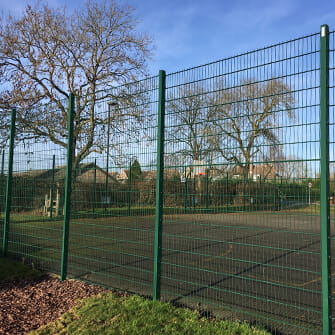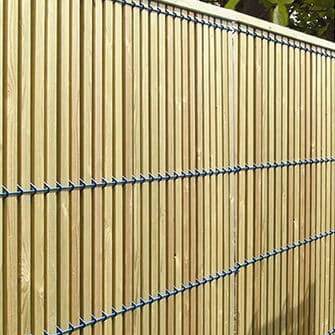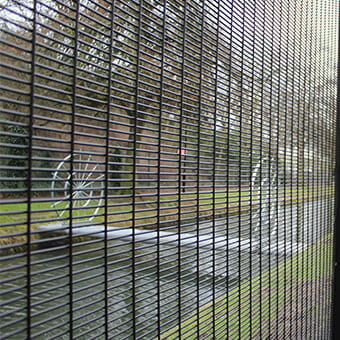Our other sites:
A gate serves multiple purposes, primarily providing security by acting as a physical barrier to control access, deter intruders, and protect occupants and assets. It enhances privacy by restricting visibility and unauthorised access, making it a crucial component of a security strategy for residential, commercial, and private applications. Beyond functionality, gates add aesthetic appeal, often designed to complement the local architecture or design of a property, enhancing its curb appeal and value. In commercial or community settings, gates help manage traffic flow and regulate access, ensuring only authorised individuals enter. Additionally, gates can be symbolic, representing status or identity, particularly in historic or estate properties where they serve as a transition between spaces.
What is a manual gate?
A manual gate is a gate that requires physical effort to open and close, as opposed to being operated automatically through electric motors and remote control systems. It typically features a latch, hinge, or lock mechanism that must be engaged or disengaged by hand. Manual gates do not require a power source.

What is an automated gate?
An automated gate is a gate that operates using an electric motor or hydraulic system, allowing it to open and close automatically without the need for manual effort. They are often controlled through various methods such as remote controls, keypads, sensors, access cards, or mobile apps, and require a power source, but will also have a manual override in case of a power outage.

Pros and cons of manual gates
Pros:
- Cost-effective: Manual gates are generally cheaper to install and maintain, as they do not require motors, electrical components, or sophisticated access control systems. Services are also cheaper and can usually be performed by the site owner with simple cleaning and oiling processes.
- Low maintenance: With fewer mechanical parts and no electrical components, manual gates often require less upkeep, making them reliable over the long term.
- No power source needed: Since they operate without electricity, manual gates are unaffected by power outages, making them suitable for remote locations or areas without easy access to power.
- Simplicity and durability: The straightforward design of manual gates makes them durable and easy to operate without the need for complex mechanisms that could fail or require repair.
- Greater control over access: Manual operation provides users with direct, hands-on control, which can be useful for small properties or areas with low traffic.
Cons:
- Inconvenience: Opening and closing a manual gate requires physical effort, which can be inconvenient, especially in bad weather, for larger gates, or for individuals with limited mobility.
- Less secure: Manual gates may not offer the same level of security as automated gates, which often include features like automatic locks. Manual gates may be left open accidentally whereas automatic gates can be set to automatically close after a period of time or out of business opening hours.
- Time-consuming: For high-traffic areas or larger properties, manual gates can slow down access as the gate must be manually opened and closed each time either by the pedestrian or vehicle, or by an on-site manned operator.
- Lack of automation options: Manual gates do not support integration with smart technology or remote control, limiting their convenience for users who prefer automated or app-based access management.
- Not suitable for large gates: Manual operation usually only suits relatively small swing gates. A sliding gate or a large gate would be awkward and heavy to open manually.
- Limited safety features: Without sensors or automatic closing mechanisms, manual gates may pose safety risks, such as being left open accidentally or causing injury if not properly handled.
Pros and cons of automated gates
Pros:
- Convenience: Automated gates provide easy and effortless access, often controlled via remote, keypad, smartphone app, or sensor, eliminating the need for manual operation.
- Enhanced security: Many automated gates come with integrated security features such as automatic locking, video surveillance, keypads, and intercom systems, offering greater protection against unauthorised access.
- Access control: Automated systems allow for customised access control, enabling only authorised individuals to enter. They can be programmed with different access methods, like keycards, biometrics, or license plate recognition, improving control and monitoring.
- Increased safety: Automated gates often include safety sensors and obstacle detection systems, preventing the gate from closing if an obstruction is detected, thereby reducing the risk of accidents or injury. However, this is only true for gates that have been correctly automated and installed according to the required safety regulations. They must also be serviced and maintained twice yearly.
- Integration with smart technology: Automated gates can be integrated with home automation systems and smart security setups, allowing for remote management and real-time monitoring, which enhances both convenience and security.
Cons:
- Higher cost: Installation and maintenance of automated gates are more expensive due to the need for motors, electrical wiring, and advanced access control technology.
- Power dependency: Automated gates require a power source, making them vulnerable to power outages unless equipped with backup battery systems.
- Maintenance requirements: With more moving parts, sensors, and electrical components, automated gates require regular maintenance and may experience technical malfunctions or breakdowns, leading to additional repair costs.
- Complexity: Automated systems can be complicated to troubleshoot and repair, often requiring professional assistance, which may be time-consuming and costly.
- Risk of malfunction: If not properly maintained, automated gates may malfunction or become stuck, which could pose security or access issues, especially during emergencies or high-traffic periods.
- Safety: Safety with automated gates is a double-edged sword: automated gates, if incorrectly installed or poorly manufactured and not maintained are much more dangerous than a manual gate.
Aesthetics
It’s worth mentioning aesthetics as these are important for many sites, and with Jacksons gates, whether automated or manually operated, they look almost identical, as any of our gate designs can be automated. The only difference is some inconspicuous gate safety devices added to the gate and the addition of machinery on the back of the gate and next to the gate, which will be behind the fence line and not visible from the outside.
Managing multiple gates and access points
A mixture of both automated and manual gates is recommended for sites with multiple access points. When managing multiple gates on a site, it’s important to designate each gate for specific uses, such as a main entrance for primary access, a service gate for deliveries, and an emergency exit gate. Pedestrian versions of each gate should also be installed alongside vehicular ones, if appropriate. This setup increases efficiency, minimises congestion, and enhances safety and security. Clear signage is crucial to direct traffic appropriately, reducing confusion and ensuring efficient flow. Integrating all gates into a centralised security system allows for real-time monitoring and remote control, enabling swift responses to incidents or unauthorised access attempts. Additionally, it’s important to have contingency plans for gate failures, such as using backup gates (manually operated). By applying these best practices, sites can achieve secure, efficient, and well-organised management of multiple gates, enhancing both accessibility and overall safety.

So is an automated or manual gate best?
In our expert opinion with years of experience and knowledge, we believe automated gates offer increased security and convenience and should be specified and installed instead of manual gates in certain sectors, applications and scenarios. This of course comes with caveats such as site-specific suitability, available space, and underground services that may prevent installation.
Data centres, utilities, high security areas in transport applications such as airports and ports, storage facilities, government and military facilities, hospitals, and distribution centres are all sites which we highly recommend automated gates instead of manual gates, at least in one position on site. This is usually the main entry and exit point to the site.
Maintenance of automated gates
If an automated gate is chosen, be sure to have it serviced twice a year to ensure it does not fall into disrepair and become unreliable or unsafe. Regular maintenance and inspections keep gates functioning properly, especially emergency gates that must remain unobstructed.
For more advice on choosing the right type of gate, check out our other blogs or contact our friendly and knowledgeable team.
Related products
Jacksons Security has a range of products relating to this article, all complete with our 25 year service life guarantee. If you cannot find the item you are looking for, please do not hesitate to call our friendly sales team.
Related Content
Top








